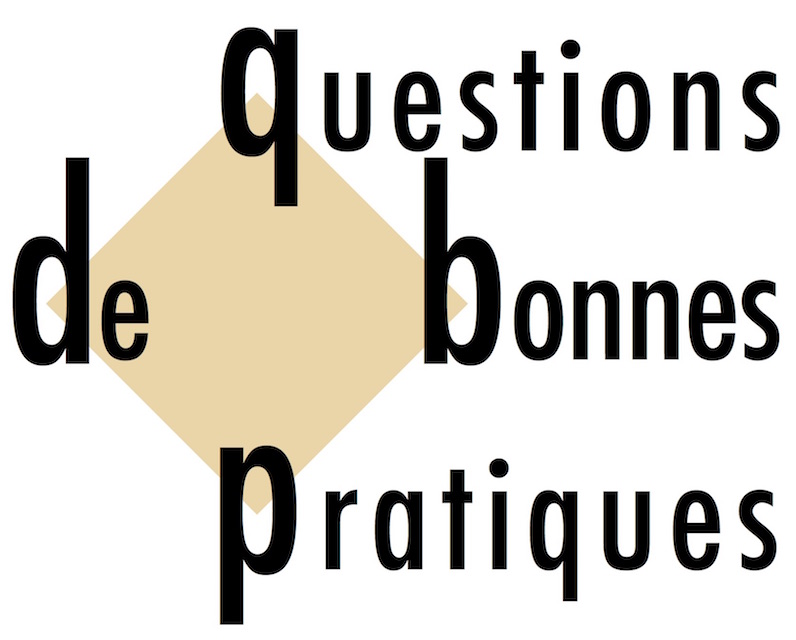Lien vers la table des matières de la bibliographie thématique, composée de documents réunis par un Groupe de travail constitué dans la perspective de préciser les spécificités de l'approche clinique de l'Antenne 110 par rapport aux "Evidence-Based Practices" : CLIQUER ICI.
Anderson, S. R., Taras, M., & Cannon, B. O. (1996). Teaching new skills to young children with autism. In C. Maurice (Ed.), Behavioral intervention for young children with autism (pp. 181-194). Texas: Pro-Ed.
Dib, N., & Sturmey, P. (2007). Reducing student stereotypy by improving teachers' implementation of discrete-trial teaching. Journal of Applied Behavior Analysis, 40(2), 339-343. http://dx.doi.org/10.1901/jaba.2007.52-06
Dunlap, G., Dyer, K., & Koegel, R. L. (1983). Autistic self-stimulation and intertrial interval duration. American Journal of Mental Deficiency, 88(2), 194-202.
Ghezzi, P. M. (2007). Discrete trials teaching. Psychology in the Schools, 44(7), 667-679.
Gould, E., Tarbox, J., O'Hora, D., Noone, S., & Bergstrom, R. (2011). Teaching children with autism a basic component skill of perspective-taking. Behavioral Interventions, 26(1), 50-66. http://dx.doi.org/10.1002/bin.320
Grow, L. L., Carr, J. E., Kodak, T. M., Jostad, C. M., & Kisamore, A. N. (2011). A comparison of methods for teaching receptive labeling to children with autism spectrum disorders. Journal of Applied Behavior Analysis, 44(3), 475-498. http://dx.doi.org/10.1901/jaba.2011.44-475
Grow, L. L., Kodak, T., & Carr, J. E. (2014). A comparison of methods for teaching receptive labeling to children with autism spectrum disorders: A systematic replication. Journal of Applied Behavior Analysis. http://dx.doi.org/10.1002/jaba.141
Holmes, E. J., Eikeseth, S., & Schulze, K. A. (2015). Teaching individuals with autism receptive labeling skills involving conditional discriminations: A comparison of mass trial and intermixing before random rotation, random rotation only, and combined blocking. Research in Autism Spectrum Disorders, 11, 1-12. http://dx.doi.org/10.1016/j.rasd.2014.11.013
Jahr, E. (2001). Teaching children with autism to answer novel wh-questions by utilizing a multiple exemplar strategy. Res Dev Disabil, 22(5), 407-423.
Jones, E. A., Feeley, K. M., & Takacs, J. (2007). Teaching spontaneous responses to young children with autism. Journal of Applied Behavior Analysis, 40(3), 565-570. http://dx.doi.org/10.1901/jaba.2007.40-565
Kelley, M. E., Alice Shillingsburg, M., Jicel Castro, M., Addison, L. R., & LaRue, R. H. (2007). Further evaluation of emerging speech in children with developmental disabilities: Training verbal behavior. Journal of Applied Behavior Analysis, 40(3), 431-445. http://dx.doi.org/10.1901/jaba.2007.40-431
Kodak, T., & Clements, A. (2009). Acquisition of mands and tacts with concurrent echoic training. Journal of Applied Behavior Analysis, 42(4), 839-843. http://dx.doi.org/10.1901/jaba.2009.42-839
Koegel, R. L., Russo, D. C., & Rincover, A. (1977). Assessing and training teachers in the generalized use of behavior modification with autistic children. Journal of Applied Behavior Analysis, 10(2), 197-205. http://dx.doi.org/10.1901/jaba.1977.10-197
Lang, R., Rispoli, M., Sigafoos, J., Lancioni, G., Andrews, A., & Ortega, L. (2011). Effects of language of instruction on response accuracy and challenging behavior in a child with autism. Journal of Behavioral Education, 20(4), 252-259. http://dx.doi.org/10.1007/s10864-011-9130-0
Leaf, J. B., Oppenheim-Leaf, M. L., Dotson, W. H., Johnson, V. A., Courtemanche, A. B., Sheldon, J. B., & Sherman, J. A. (2011). Effects of no-no prompting on teaching expressive labeling of facial expressions to children with and without a pervasive developmental disorder. Education and Training in Autism and Developmental Disabilities, 46(2), 186-203.
Leaf, J. B., Tsuji, K. H., Lentell, A. E., Dale, S. E., Kassardjian, A., Taubman, M., . . . Oppenheim-Leaf, M. L. (2013). A comparison of discrete trial teaching implemented in a one-to-one instructional format and in a group instructional format. Behavioral Interventions, 28(1), 82-106. http://dx.doi.org/10.1002/bin.1357
McHugh, L., Bobarnac, A., & Reed, P. (2011). Brief report: Teaching situation-based emotions to children with autistic spectrum disorder. J Autism Dev Disord, 41(10), 1423-1428. http://dx.doi.org/10.1007/s10803-010-1152-2
Miranda-Linné, F., & Melin, L. (1992). Acquisition, generalization, and spontaneous use of color adjectives: A comparison of incidental teaching and traditional discrete-trial procedures for children with autism. Res Dev Disabil, 13(3), 191-210.
Mosier, A. (2011).
Naoi, N. (2009). Intervention and treatment methods for children with autism spectrum disorders. In J. L. Matson (Ed.), Applied behavior analysis for children with autism spectrum disorders (pp. 67-81). Springer. http://dx.doi.org/10.1007/978-1-4419-0088-3_2
Schreibman, L., Kaneko, W. M., & Koegel, R. L. (1991). Positive affect of parents of autistic children: A comparison across two teaching techniques. Behavior Therapy, 22(4), 479-490. http://dx.doi.org/10.1016/S0005-7894(05)80340-5
Schreibman, L., Stahmer, A. C., Barlett, V. C., & Dufek, S. (2009). Brief report: Toward refinement of a predictive behavioral profile for treatment outcome in children with autism. Res Autism Spectr Disord, 3(1), 163-172. http://dx.doi.org/10.1016/j.rasd.2008.04.008
Simer, N., & Cuvo, A. J. (2009). Training vision screening behavior to children with developmental disabilities. Research in Autism Spectrum Disorders, 3(2), 409-420. http://dx.doi.org/10.1016/j.rasd.2008.08.007
Smith, T. (2001). Discrete trial training in the treatment of autism. Focus on Autism and Other Developmental Disabilities, 16(2), 86-92.
Stahmer, A. C., Ingersoll, B., & Carter, C. (2003). Behavioral approaches to promoting play. Autism, 7(4), 401-413.
Steege, M. W., Mace, F. C., Perry, L., & Longenecker, H. (2007). Applied behavior analysis: Beyond discrete trial teaching. Psychology in the Schools, 44(1), 91-99. http://dx.doi.org/10.1002/pits.20208
Summers, J., Tarbox, J., Findel-Pyles, R. S., Wilke, A. E., Bergstrom, R., & Williams, W. L. (2011). Teaching two household safety skills to children with autism. Research in Autism Spectrum Disorders, 5(1), 629-632. http://dx.doi.org/10.1016/j.rasd.2010.07.008
Sundberg, M. L., & Partington, J. W. (1999). The need for both discrete trial training and natural environment language training for children with autism. In P. Ghezzi, W. L. Williams, & J. E. Carr (Eds.), Autism: Behavior analytic perspectives (pp. 139-156). Context Press.
Tarbox, R., & Najdowski, A. (2008). Discrete trial training as a teaching paradigm. In J. K. Luiselli, D. C. Russo, W. P. Christian, & S. M. Wilczynski (Eds.), Effective practices for children with autism (pp. 181-194). Oxford University Press.
Taubman, M., Brierley, S., Wishner, J., Baker, D., McEachin, J., & Leaf, R. B. (2001). The effectiveness of a group discrete trial instructional approach for preschoolers with developmental disabilities. Res Dev Disabil, 22(3), 205-219.
Thomson, K., Martin, G. L., Arnal, L., Fazzio, D., & Yu, C. T. (2009). Instructing individuals to deliver discrete-trials teaching to children with autism spectrum disorders: A review. Research in Autism Spectrum Disorders, 3(3), 590-606. http://dx.doi.org/10.1016/j.rasd.2009.01.003
Vedora, J., Meunier, L., & Mackay, H. (2009). Teaching intraverbal behavior to children with autism: A comparison of textual and echoic prompts. The Analysis of Verbal Behavior, 25(1), 79-86.
Wynn, J. W., & Smith, T. (2003). Generalization between receptive and expressive language in young children with autism. Behavioral Interventions, 18(4), 245-266. http://dx.doi.org/10.1002/bin.142



